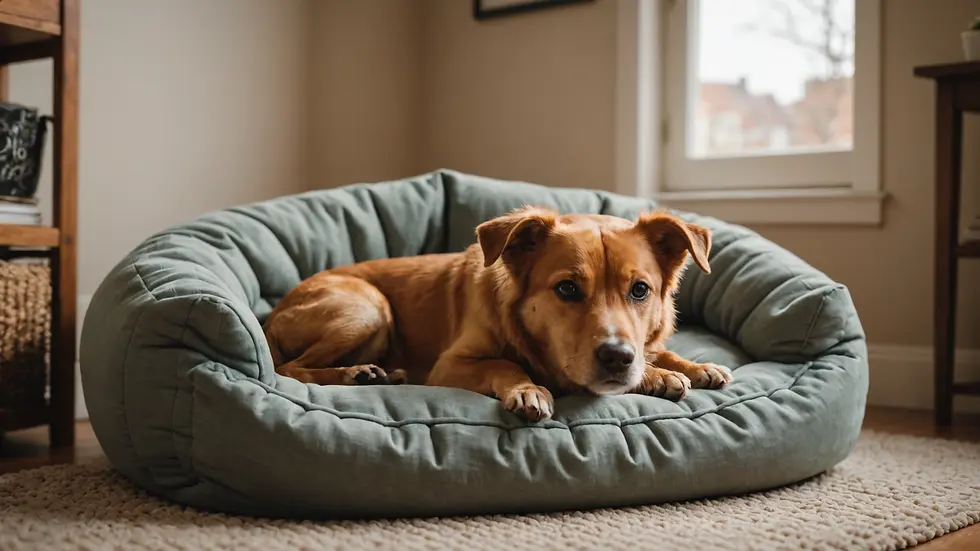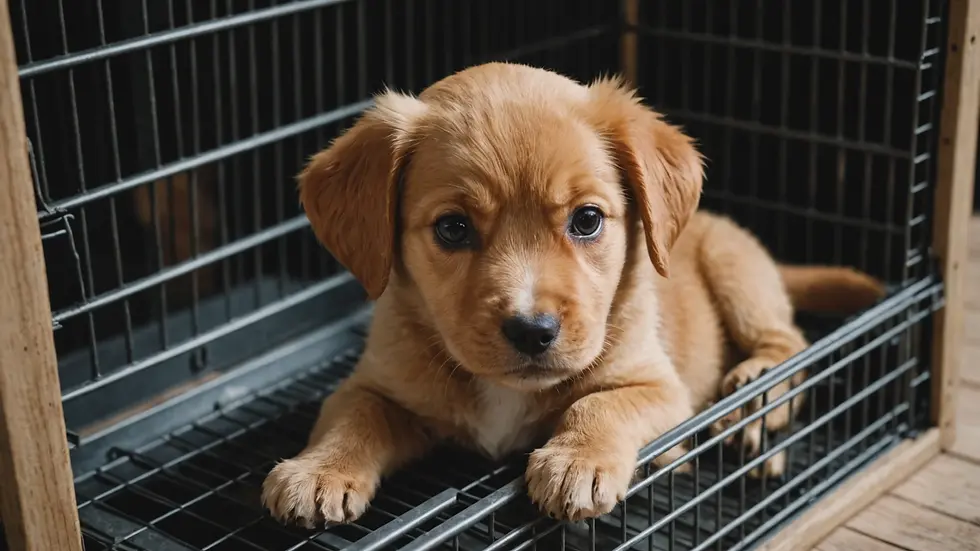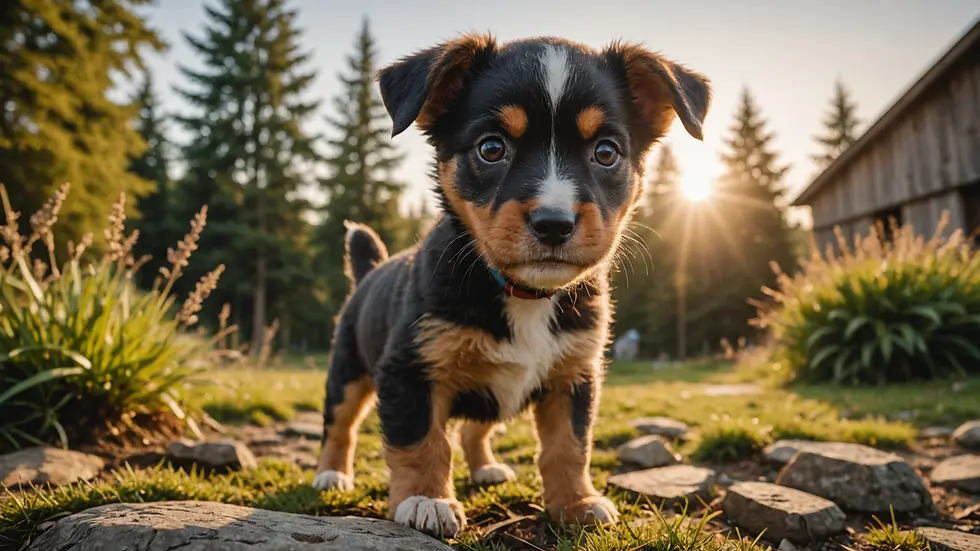Puppy Fear Periods: Understanding and Overcoming Anxiety in Puppy Training
- stevenscanine
- Mar 9
- 5 min read
Bringing a puppy home is an exciting experience filled with joy and companionship. However, puppy training can often be tough due to natural fear periods. These phases are crucial for your puppy's development, and understanding them can lead to a more confident and well-adjusted adult dog. In this post, we will explore what puppy fear periods are, how to identify them, and effective strategies to help your puppy cope with anxiety during these crucial stages.
What are Puppy Fear Periods?
Puppy fear periods are developmental stages when young dogs become particularly sensitive to new experiences, sounds, and sights. During these times, puppies may react fearfully to situations or objects that previously excited them.
These fear phases usually emerge between 8-11 weeks and again at 14-18 weeks of age. Each puppy is unique, which means the timing and intensity of these fear responses can differ greatly. For example, while one puppy may shy away from a vacuum cleaner, another may react fearfully to loud thunder. Recognizing and understanding these stages will help you manage your puppy's emotional well-being as they grow.
Signs of Fear in Puppies
Recognizing signs of fear in your puppy is the first step toward providing the right support. Symptoms can include:
Cowering or hiding: Puppies may seek shelter behind furniture or under beds. For instance, if a loud truck passes by, your puppy may scramble to a corner.
Barking or whining: Vocalizations often signal your puppy's discomfort or anxiety, especially in unfamiliar situations.
Growling: This behavior typically suggests fear or discomfort around something unfamiliar.
Avoidance behaviors: A puppy might attempt to escape a friend’s visit or avoid going outside when confronted with a new sound, such as a lawnmower.
Pacing or restlessness: An anxious puppy may exhibit hyperactivity, making it hard for them to settle down, especially during fireworks or thunderstorms.
Identifying these signs early allows you to support your puppy effectively during these critical periods.
The Importance of Socialization in Puppy Training
Effective socialization plays a key role in helping puppies overcome fears. Exposing your puppy to different sights, sounds, and experiences in a safe and positive environment helps them adapt.
During the fear periods, introduce your puppy gradually to new experiences. For instance, if your puppy is hesitant about meeting strangers, start by having one calm person approach from a distance while offering treats. Over time, move closer as your puppy becomes comfortable. Aim for 15-20 positive interactions with new people or environments per week to build confidence.
Positive associations are essential. When your puppy encounters something that frightens them, such as a bigger dog, reward them with treats or praise. This reinforces the idea that new situations can be positive.
Techniques for Addressing Fear
Supporting a fearful puppy requires a thoughtful approach. Here are two effective techniques:
Gradual Desensitization
This technique involves slowly introducing your puppy to fear-inducing stimuli. Start at a distance that feels safe for your puppy. For example, if your puppy fears bicycles, distance yourself from the source. Over time, gradually decrease the distance while rewarding calm behavior. Always end sessions on a positive note, like with playtime or treats.
Counter-Conditioning
Counter-conditioning changes how a puppy feels about fear triggers. Pair frightening experiences, like encountering another dog, with enjoyable activities—like offering a favored toy or treats. This encourages your puppy to associate positive feelings with situations that previously caused anxiety. Rather than generating fear, you create happy memories that help them cope.
Creating a Safe Space
A safe space is essential during fear periods. This can be a cozy crate or a quiet corner with blankets and your puppy's favorite toys. Ensure this area remains free of stressors. You can encourage your puppy to retreat here during overwhelming moments, such as when new visitors arrive or loud noises occur.

Avoiding Overexposure
It's crucial not to overwhelm your puppy by forcing them into stressful situations. Overexposing them to frightening experiences can lead to increased anxiety. Instead, keep exposure sessions brief and positive. For example, if your puppy fears car rides, start with very short trips around the block and reward them afterward.
The Role of Positive Reinforcement
Positive reinforcement is vital in training, especially for addressing fear. By rewarding brave behavior, you build trust with your puppy. Recognize and reward small acts of courage, such as exploring a new room or accepting a treat from a stranger. This will boost their confidence and help them learn to tackle fear-inducing challenges.
Understanding Your Puppy’s Individual Needs
Every puppy has a unique personality. Some may quickly adapt to new environments, while others require more time. Pay close attention to your puppy’s reactions. For example, if your puppy fears loud noises, it may be helpful to monitor specific events, like thunderstorms. Adjust your approach as needed. If anxiety remains intense, consider seeking advice from a professional dog trainer for tailored guidance.
The Impact of Genetics and Early Experiences
Genetics can influence how your puppy reacts to new situations. Some breeds, such as Chihuahuas or Shih Tzus, may be more prone to fearful behaviors. Additionally, early positive socialization experiences can shape how puppies respond as they grow. A puppy exposed to varied experiences is likely to be more adaptable. Conversely, a puppy with minimal social exposure may struggle more with fear later.
Training Through Play
Play is a fantastic way to build confidence in your puppy. Engaging in games with diverse toys, environments, and playmates creates positive memories. Introduce new toys gradually, allowing your puppy to explore at their own pace. Consider organizing playdates with well-socialized dogs, as this interaction teaches puppies important social cues.
Encouraging Exploration
Guide your puppy to explore their surroundings. Lead outings to parks or neighborhoods, gently encouraging them to sniff and investigate. Use treats and praise to motivate exploration. Always allow your puppy to set their own pace. A positive exploratory environment will foster confidence and help your puppy navigate fear triggers better.
When to Seek Professional Help
While many puppies can learn to manage fears, some might require additional support. If your puppy exhibits severe anxiety that impacts daily life or training, consult a veterinarian or professional trainer. They can provide tailored strategies to help your puppy cope at a comfortable pace.

Patience and Consistency are Key
Training your puppy through fear periods demands patience and consistency. Understand that fear stages are temporary and can be managed with the right approach. Keep your training consistent across all family members to reinforce your puppy's learning and create a supportive environment.
Navigating the Adventure Together
Helping your puppy through fear periods can be both a challenge and a rewarding experience. By understanding these fear stages and applying effective techniques, you can assist your puppy in building confidence and navigating their anxiety.
Create a positive environment where your puppy can thrive despite their fears. With time, patience, and a bit of determination, you will strengthen the bond between you and your furry friend, making your training journey fulfilling.
Celebrate each step you take with your puppy. Each small victory contributes to a happier, healthier life together.







Comments